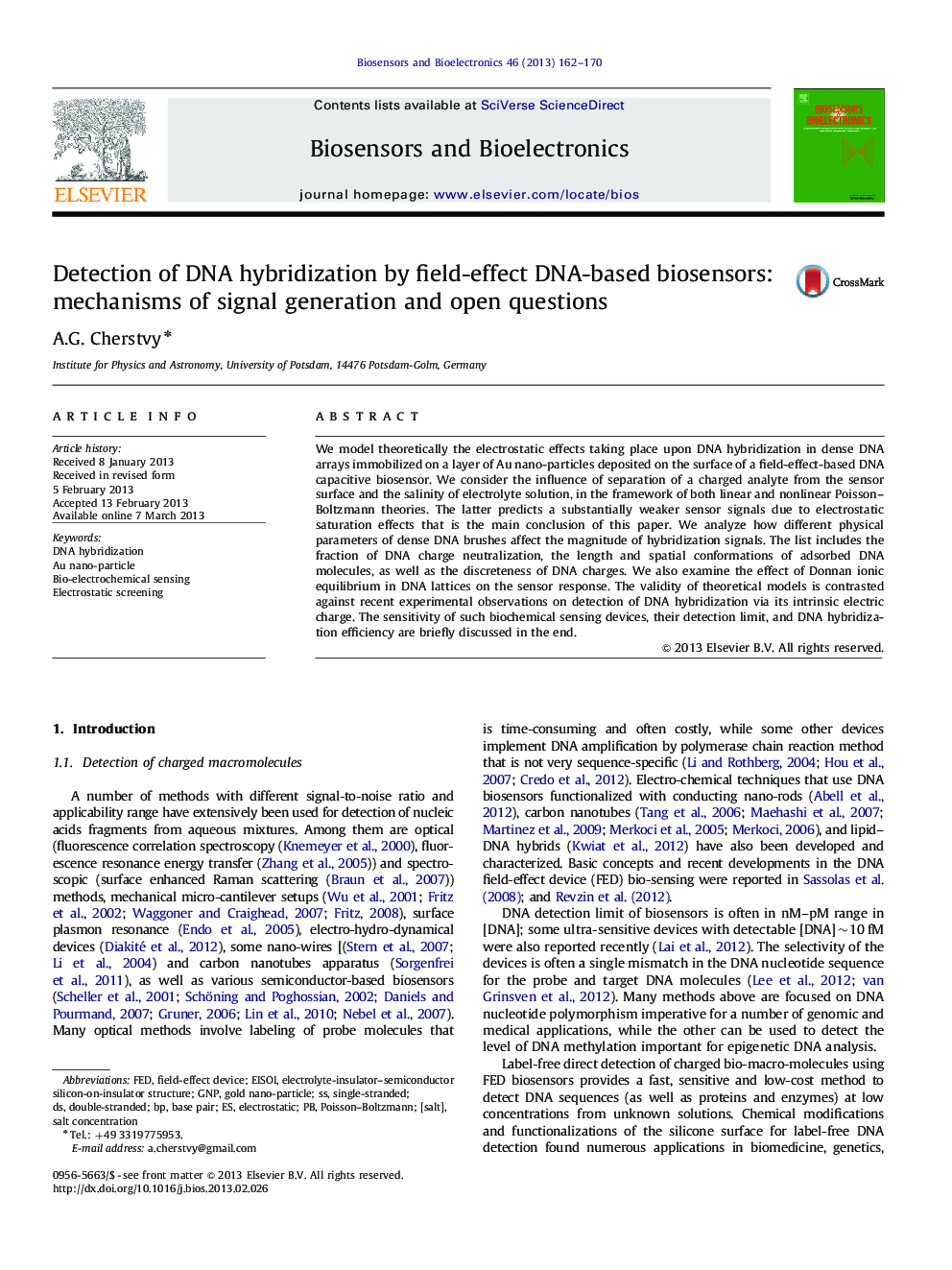| Article ID | Journal | Published Year | Pages | File Type |
|---|---|---|---|---|
| 867188 | Biosensors and Bioelectronics | 2013 | 9 Pages |
We model theoretically the electrostatic effects taking place upon DNA hybridization in dense DNA arrays immobilized on a layer of Au nano-particles deposited on the surface of a field-effect-based DNA capacitive biosensor. We consider the influence of separation of a charged analyte from the sensor surface and the salinity of electrolyte solution, in the framework of both linear and nonlinear Poisson–Boltzmann theories. The latter predicts a substantially weaker sensor signals due to electrostatic saturation effects that is the main conclusion of this paper. We analyze how different physical parameters of dense DNA brushes affect the magnitude of hybridization signals. The list includes the fraction of DNA charge neutralization, the length and spatial conformations of adsorbed DNA molecules, as well as the discreteness of DNA charges. We also examine the effect of Donnan ionic equilibrium in DNA lattices on the sensor response. The validity of theoretical models is contrasted against recent experimental observations on detection of DNA hybridization via its intrinsic electric charge. The sensitivity of such biochemical sensing devices, their detection limit, and DNA hybridization efficiency are briefly discussed in the end.
► Electrostatic model of signal generation for DNA biosensors with Au nano-particles is developed. ► Influence of separation of charged analytes from the sensor surface is studied. ► Linear and nonlinear Poisson–Boltzmann models are used; Donnan effect in dense DNA brushes was examined. ► Nonlinear model predicts much weaker sensor response upon DNA hybridization. ► Charge neutralization, length and spatial conformations of deposited DNAs are analyzed.
